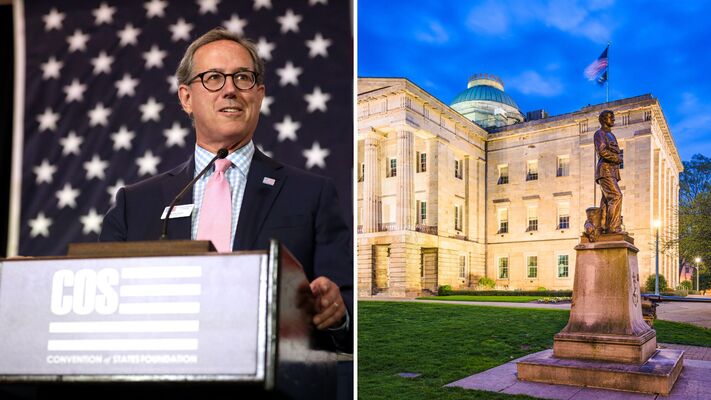The following passage is an excerpt from former U.S. Senator Rick Santorum, Senior Advisor for Convention of States, and originally featured in The Carolina Journal. Read the full article here.
Delegates from around the country, almost all of whom were state officials, arrived in a steamy legislative chamber 237 years ago. They were sent by their respective states to Philadelphia with the charge to “render the federal constitution adequate for the exigencies of the Union.”
Fresh from their revolutionary and victorious fight for freedom from tyranny, it was clear then that the Articles of Confederation were insufficient to hold the union together, and attempts, like the failed Annapolis Convention called the year before, were too limited in scope to address the “exigencies of the Union.” It was also clear that, while a stronger federal government was needed in some areas, these state officials were intent on assigning this new government a limited role in domestic affairs, reserving such power to the states and the people.
From the initial draft to every proposed change, the convention was so divisive and contentious that it nearly failed on more than one occasion. Compromise after compromise was brokered until the product we now know emerged on Sept. 17, 1887.
Just two days before, Virginia’s Colonel George Mason pointed out that, in the draft document, only Congress had the power to propose amendments. He asked what would happen if Congress overstepped its bounds and then answered his own question with another. Are we so naïve to believe that Congress would restrain itself from such tyranny?
We know from experience the answer to that question today, but the founders had studied republics of history and knew today would come. The Constitution was formed on the principle of checks and balances. Even though the Constitution gave control of the US Senate to the state legislatures, a consensus immediately arose to give the state legislature, the place where most of these delegates served, another tool to check the abuses of power of the federal government — the power to propose amendments with a convention of states. Unlike almost any other amendment, it was unanimously approved by the convention.
“The Congress, whenever two thirds of both Houses shall deem it necessary, shall propose Amendments to this Constitution, or, on the Application of the Legislatures of two thirds of the several States, shall call a Convention for proposing Amendments, which, in either Case, shall be valid to all Intents and Purposes, as Part of this Constitution, when ratified by the Legislatures of three fourths of the several States.”
An Article V Convention of States has never been called. Why now?
To start with, up until the Great Depression, federal power, spending, and debt were very limited. By 1930, there were few federal programs, so the total national debt, even after WWI, was only $16 billion, or roughly $250 billion in today’s money. Then the progressives ushered in the New Deal, and 30 years later, the Great Society and federal government’s power and spending took off.
The response was the rise of the conservative movement, which sought to limit government power and spending. Some progress was made cutting spending, and there was even a balanced budget by the late 90s. All that changed with the election of Barack Obama. The federal government’s spending and debt has exploded in the past 20 years. It took our government 218 years to accumulate $6.7 trillion in national debt by 2006. Today it is over five times that amount, $34 trillion!
With spending comes power. The feds have gained more control over the states (and over you) than ever before by routinely exceeding their authority then daring the courts to strike these excesses down. As you can see, this crisis is a new and exponentially worsening phenomena that has worsened under both Democrat and Republican control in DC.
So why do we need a convention of states when we’ve never had one before? Because we have reached a tipping point where other solutions are no longer effective.
To read the rest of the article, click here. To join Sen. Santorum in support of the convention, sign the Convention of States petition below.


